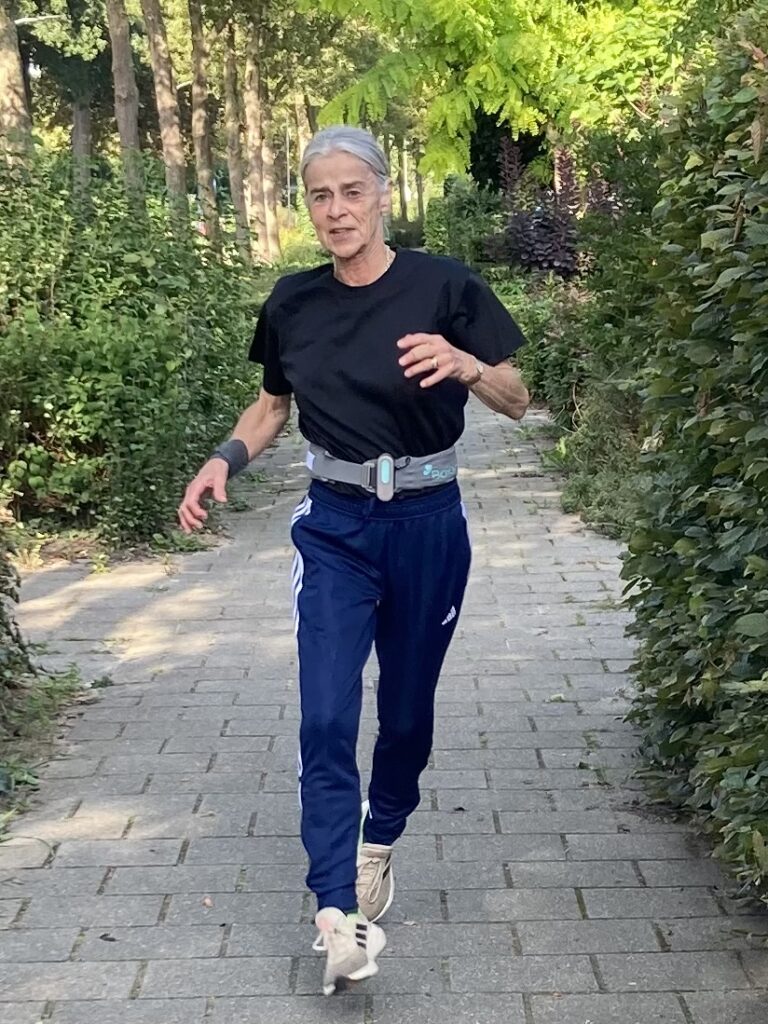The story of Tjitske
Tjitske (69) was diagnosed in 2016 with bilateral vestibular loss (BVL) after experiencing multiple episodes of vestibular neuritis in the years before. What followed was a period in which her balance, energy, and daily functioning were heavily affected. Yet, thanks to intensive training and the help of the BalanceBelt, Tjitske found a way to live her life as fully as possible again.
From an active life to daily struggles

Until the age of 60, Tjitske worked as a social worker, first in a high-security forensic psychiatric hospital and later on an acute psychiatric ward. Alongside this, she used her degree in Dutch language and literature to deliver freelance workshops and training sessions.
She led a busy, social life, owned a second home in Greece, and enjoyed life to the fullest, both in Greece and in the Netherlands. But when her balance problems began, everything changed.
“It felt as though I was completely drunk, but without the fun. Walking was hard, I was constantly dizzy, and I had severe oscillopsia*. My world became very small.”
Social activities became a challenge, reading was no longer easy, travelling was too difficult, and eventually, she was forced to sell her beloved house in Greece.
* Oscillopsia is a visual disturbance in which objects in the visual field appear to oscillate, jump, or move back and forth, even though they are actually stationary. People experiencing oscillopsia often describe it as “bouncing” or “shaking” vision.
The road back to balance: move, move, and move again
Despite these challenges, Tjitske refused to give up. She started to move more, first walking, then running, and eventually kickboxing. Today, exercise is part of her daily life: one hour of running or 75 minutes of kickboxing, combined with daily walking and gardening.
She also deliberately exposed herself to busy and noisy places to train her brain to cope with sensory overload. Step by step, she managed to reduce her symptoms to a more stable level.
“No matter how bad I feel, moving always helps. Even on the worst days, I go outside – and afterwards, I feel better.”
She discovered kickboxing during a rehabilitation program in 2022. In November 2024, she started taking classes specifically designed for people with Parkinson’s disease or acquired brain injury (ABI). The combination of complex exercises, loud music, and group training sharpened her brain’s focus, which positively impacted her daily functioning.
The BalanceBelt: more stability, more confidence
Tjitske first tried the BalanceBelt in 2019 through MUMC+. Even during the trial, she noticed how much it helped her keep her balance, and she decided to buy one. She wore it while running on uneven terrain, such as the beach or cobblestone streets, and on difficult days, it gave her the extra stability and confidence she needed for walking outdoors.
Recently, she tested the latest version of the BalanceBelt. The improved support, especially during sport and on days when her symptoms are worse, has been a game-changer. Thanks to its improved features, the belt is easier to use, which now allows her to wear it during kickboxing; she feels more stable, more confident, and moves with greater assurance.
“With the BalanceBelt, I feel more secure, more willing to push myself, and I don’t have to think about every step. It makes a huge difference, especially on uneven terrain or during kickboxing exercises.”
More energy and a greater sense of freedom
Another major benefit of the BalanceBelt is that it reduces her fatigue.
“Normally, my brain is constantly working to keep me balanced – it’s exhausting. The BalanceBelt lightens that load, leaving me with more energy for everything else.”
With the combination of daily movement and the BalanceBelt, Tjitske can get more out of her day, move more freely, and focus on the activities she loves.
Tjitske’s message to others
“Keep moving, even when it’s tough. Don’t give up, every step makes a difference. Tools like the BalanceBelt can help you rebuild your confidence and regain control over your life.”